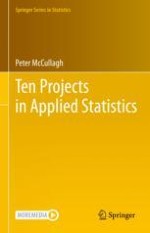Abstract
In a 2019 paper published in the Proceedings of the National Academy of the U.S., Villa et al. make the following claim:
...we show that experimental evolution of parasite body size over 4 y (approximately 60 generations) leads to reproductive isolation in natural populations of feather lice on birds. When lice are transferred to pigeons of different sizes, they rapidly evolve differences in body size that are correlated with host size. These differences in size trigger mechanical mating isolation between lice that are locally adapted to the different sized hosts.
The goal of this project is to examine the experimental design and the analysis in order to judge whether the data support the authors’ claim.
As we might expect, the design is elaborate. Several aspects of the design and conduct of the experiment are discussed at length. After preparation of the host birds, the lice were arranged in 32 lineages, one lineage per bird. Birds were housed in aviaries, four birds of the same type per aviary. The birds are of two body types, either large or normal size.
The first complication arises from the fact that lice are assigned at random to clean birds at baseline. Randomization implies exchangeability, so it is necessary to arrange matters so that all models incorporate baseline exchangeability. Off-the-shelf factorial models such as those employed by the authors, do not have this property. Also, if bird or lineage, is used solely as a block factor, the values over time are exchangeable. But the standard genetic model for the temporal evolution of a quantitative trait uses Brownian motion, which implies serial correlation.
The main thrust of the project is to investigate whether the evidence in the data support baseline exchangeability and/or serial correlation for lineages, and ultimately whether the authors claim of rapid differential evolution of louse body size associated with host size is supported.
The conclusions are all negative. Over the four-year period, no evidence is found that the mean louse body size has increased or decreased for large hosts. No evidence is found that the mean louse body size has increased or decreased for small hosts, and no evidence is found of a differential change in louse body size associated with host size. Evolution is not rapid; on this time scale it is undetectable.
